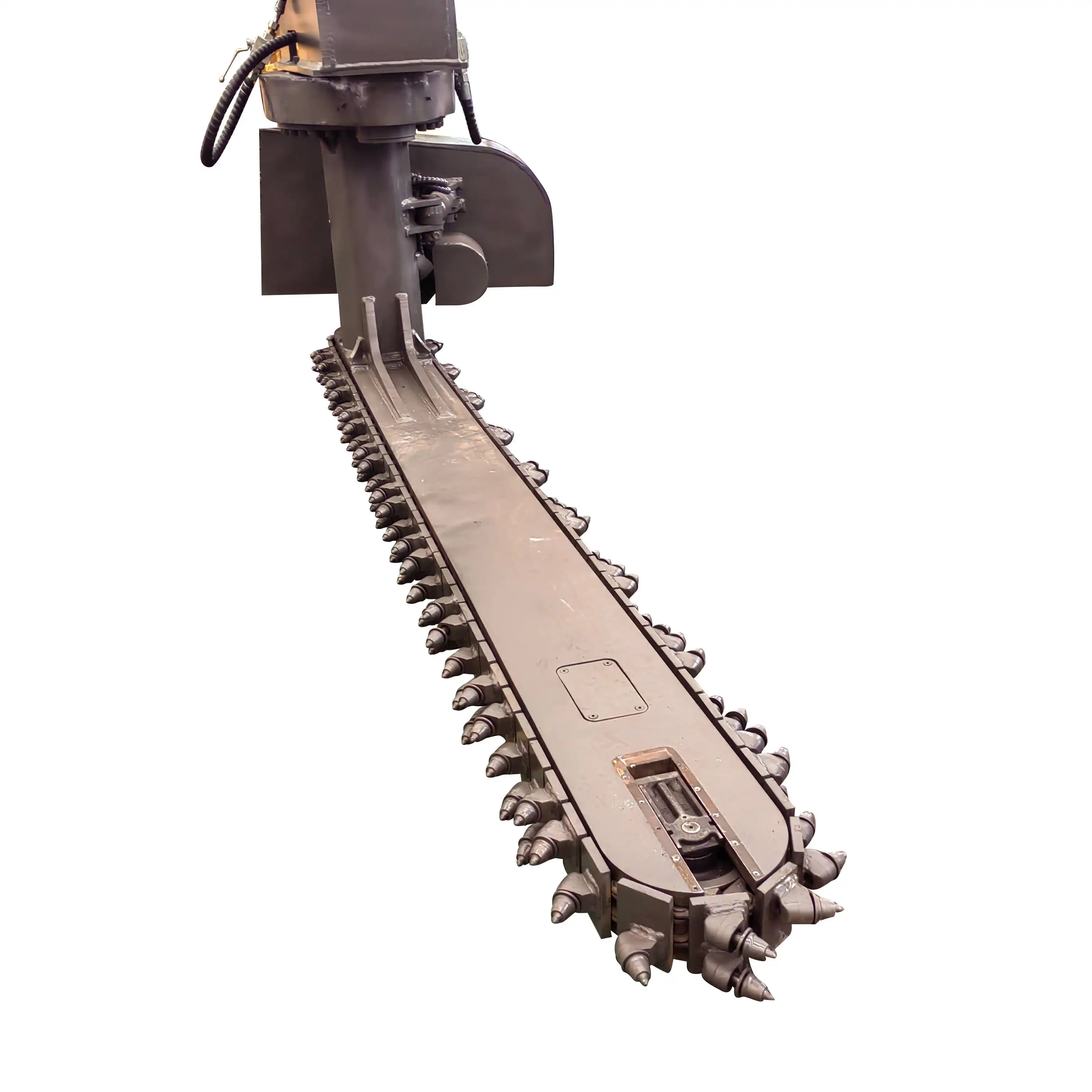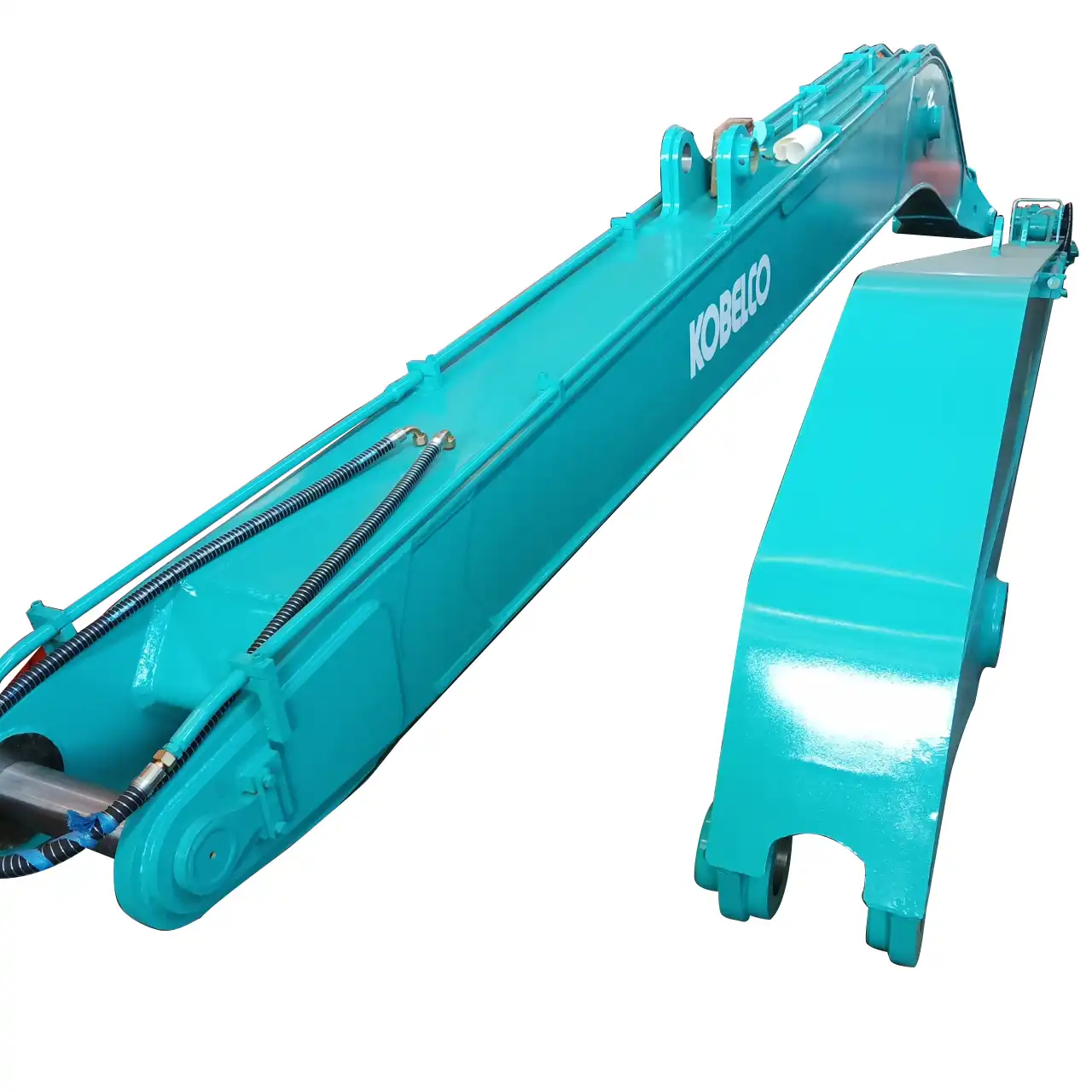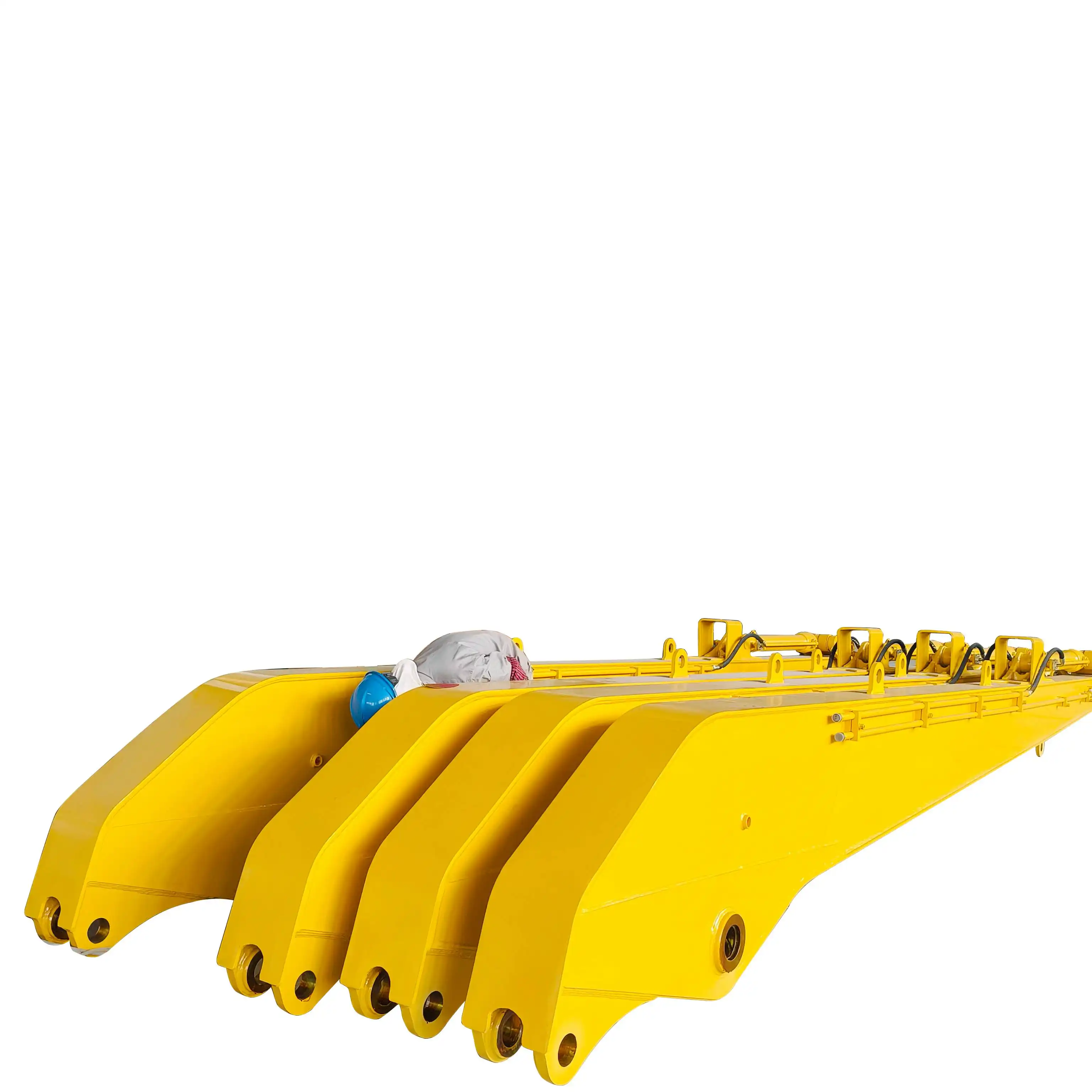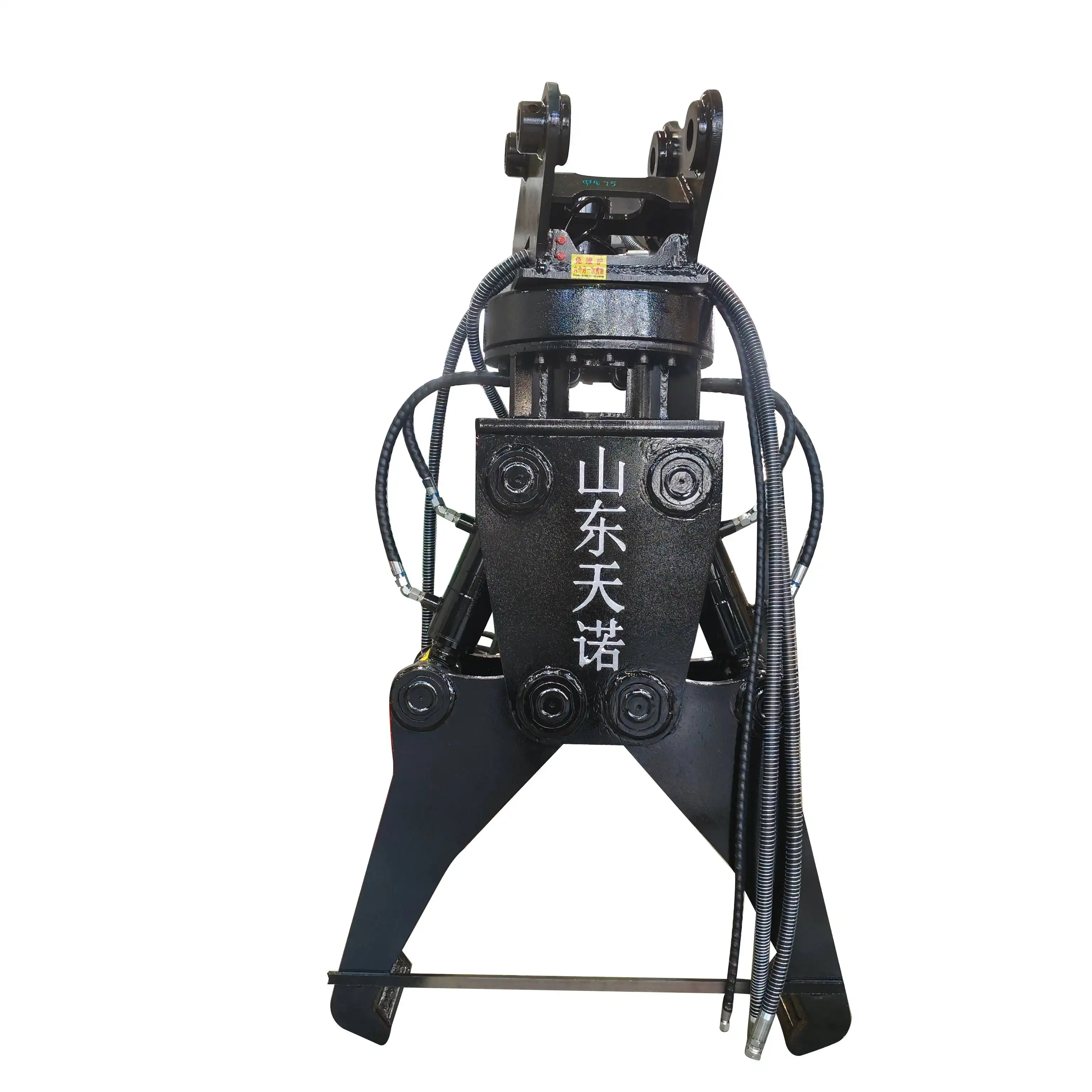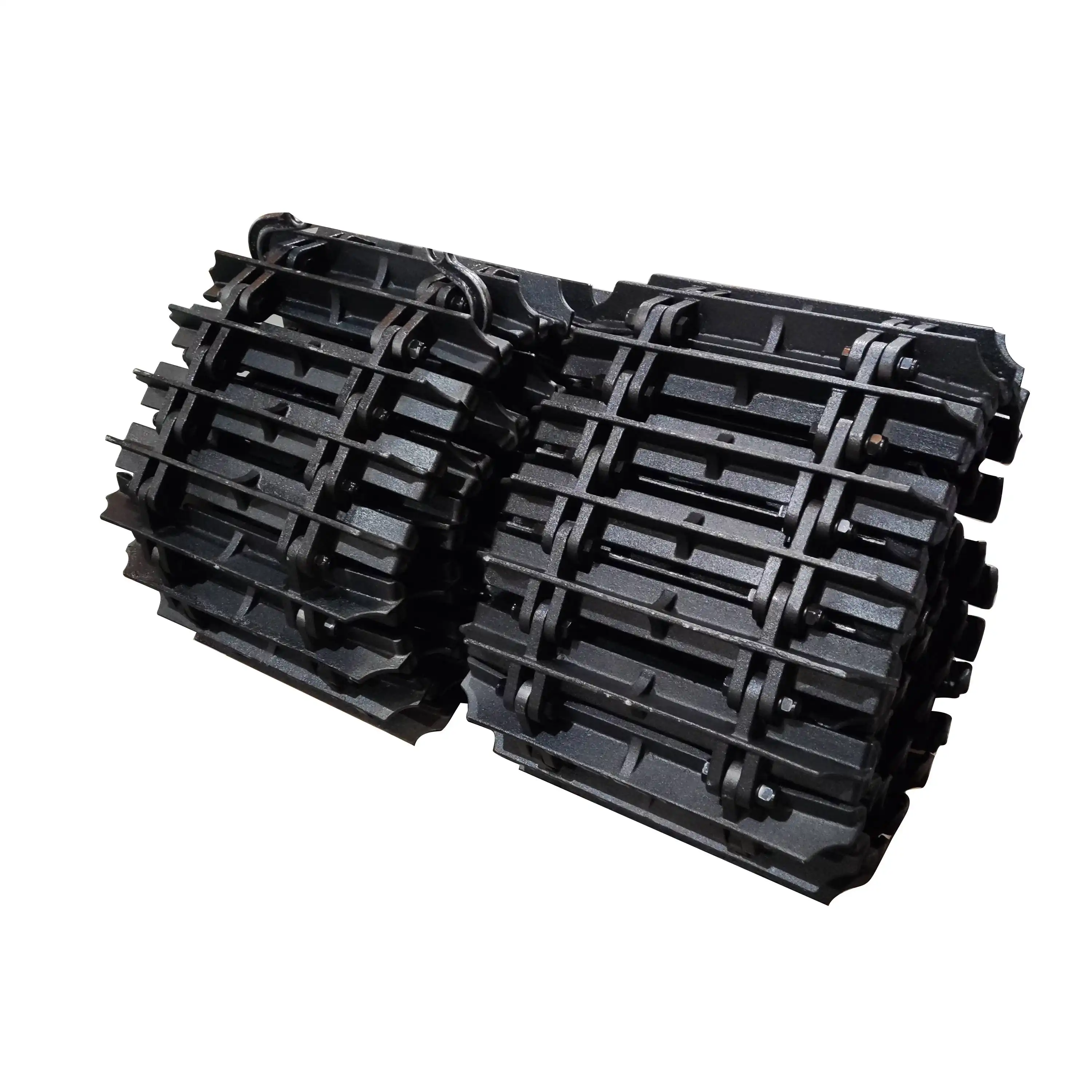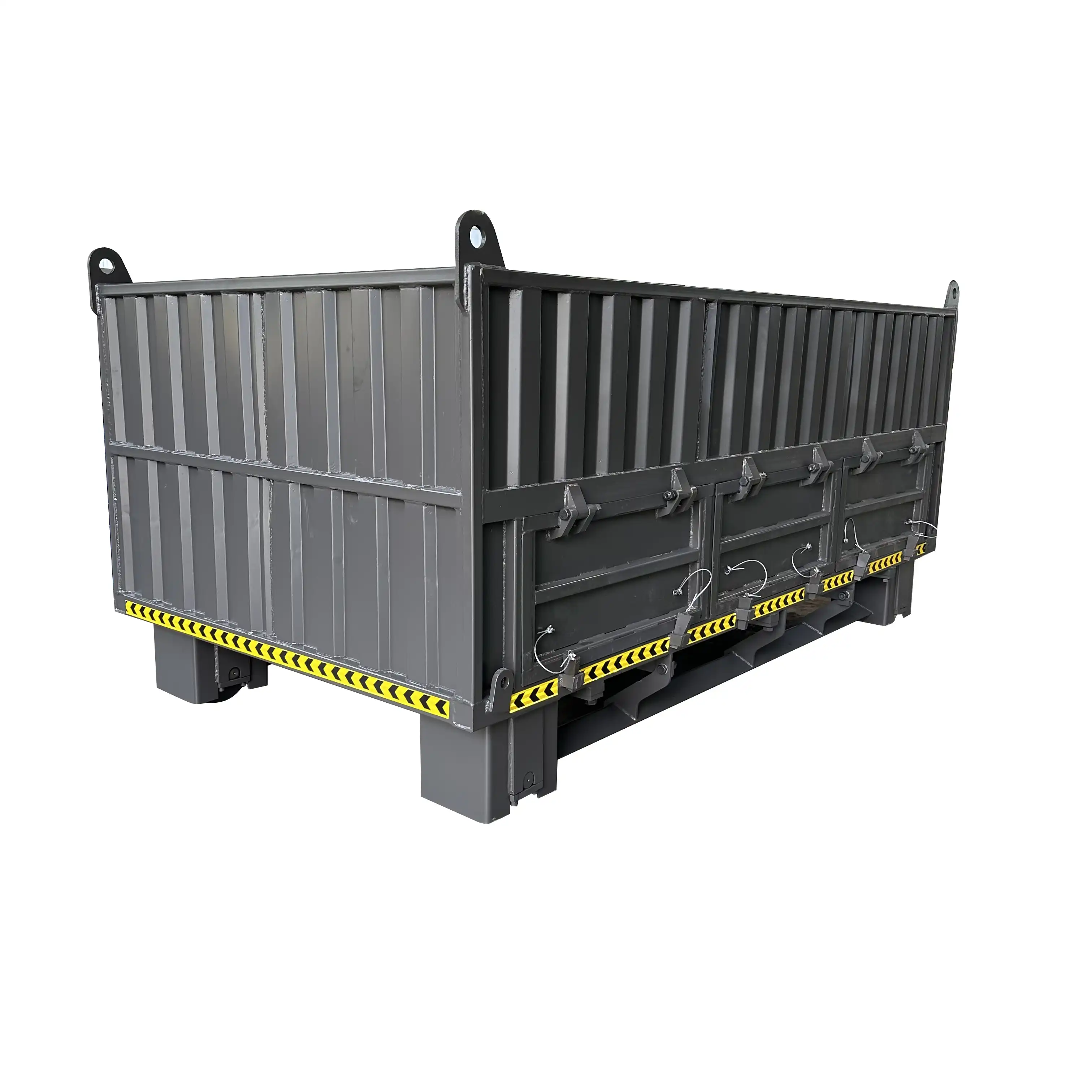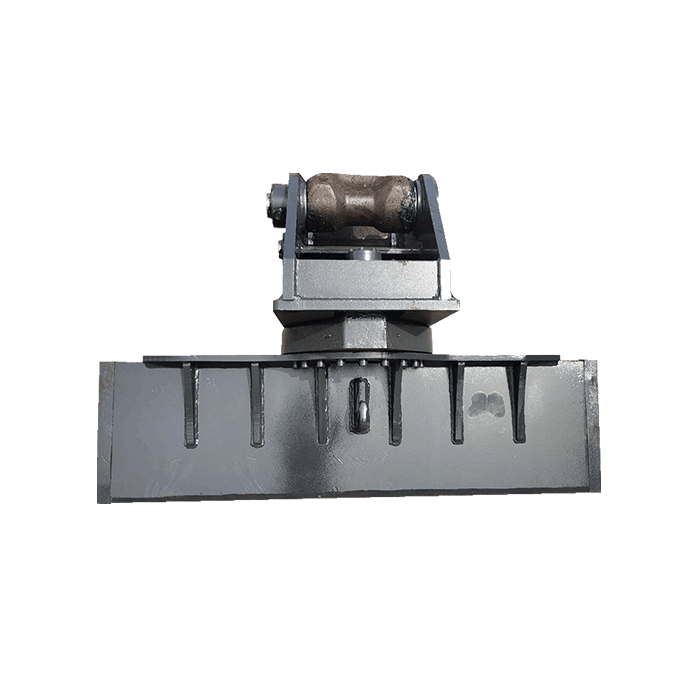Hydraulic Rock Arm For A Mining Excavator
Mining operations present some of the most challenging conditions for heavy equipment on the planet. When facing uncompromising rock formations and mineral deposits, standard excavator attachments simply won't suffice. This is where the specialized excavator rock arm becomes an indispensable tool for mining professionals. Designed specifically to withstand the punishing demands of mineral extraction and processing, these hydraulic attachments transform conventional excavators into precision rock-breaking powerhouses capable of maintaining productivity in environments where other equipment falters.
The mining industry's unique challenges, including variable material densities, tight operating spaces, and continuous production demands, require specialized equipment solutions that prioritize both performance and durability. A purpose-built hydraulic rock arm delivers the exceptional breaking force and operational reliability that mining operations demand. By distributing force precisely where needed, these attachments can fragment even the most stubborn rock formations while minimizing strain on the carrier excavator, extending equipment lifespan even under the harshest conditions. For mining operations focused on maximizing extraction efficiency while controlling operational costs, the right rock arm represents not merely an attachment but a critical productivity asset.
Key Features for Mining Operations
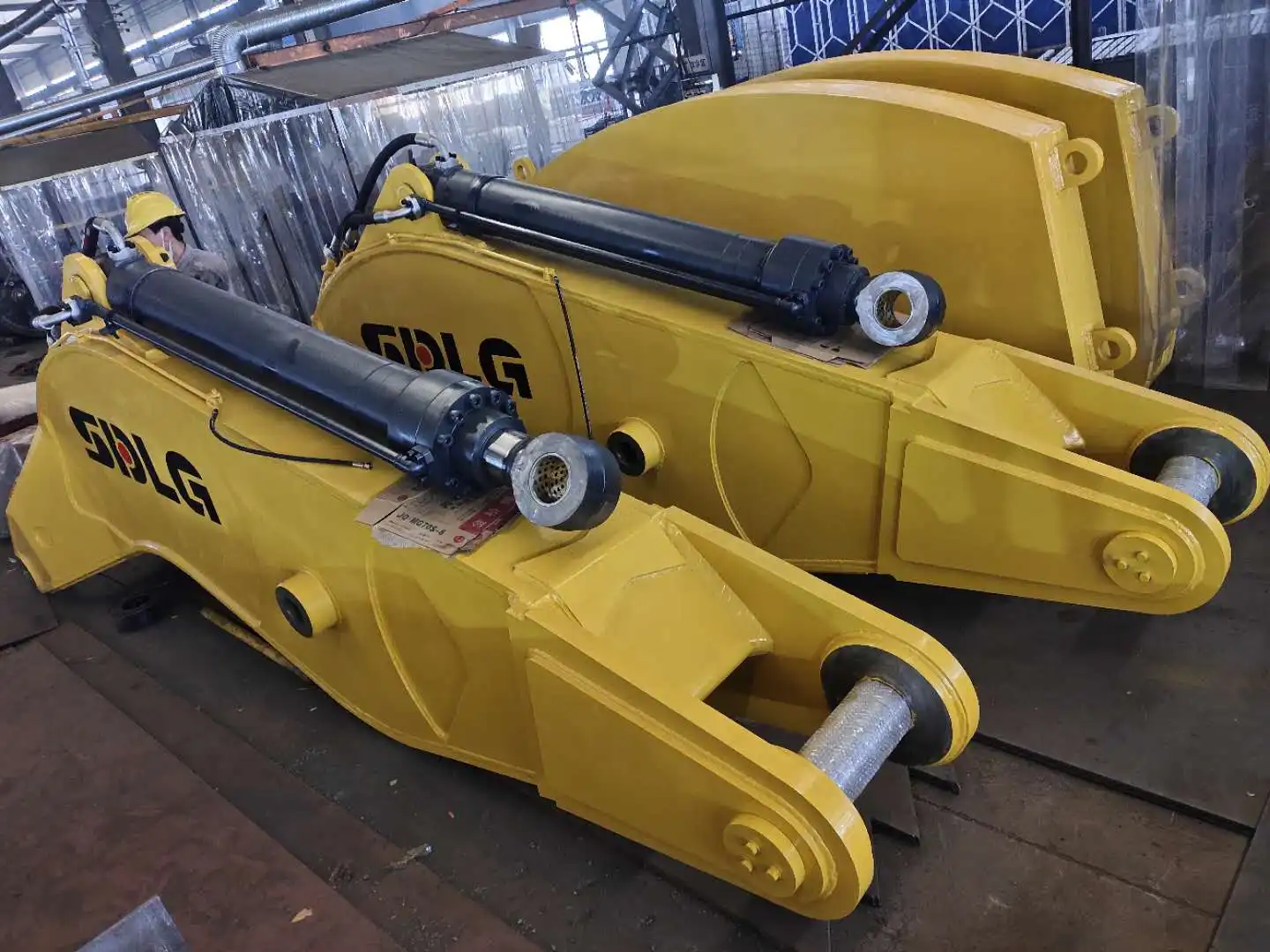
Enhanced Durability Construction
Mining environments subject equipment to extraordinary wear from abrasive materials, impact loading, and continuous operation. The excavator arm designed for these demanding applications features advanced metallurgical compositions that dramatically outperform standard construction-grade attachments. Premium mining-grade rock arms incorporate ultra-high-strength alloy steels with carefully engineered microstructures that resist crack propagation even after thousands of impact cycles.
Strategic reinforcement appears throughout the arm structure, with additional material thickness at high-stress zones and wear-resistant overlay plating in areas subject to material abrasion. This thoughtful material selection and placement ensure the attachment maintains structural integrity even when processing highly abrasive minerals like quartz-bearing ores or dense igneous formations. The boom-to-arm connection points feature oversized bushings and hardened pins that minimize play while accommodating the extreme forces generated during rock-breaking operations.
Specialized surface treatments further enhance durability, with industrial-grade powder coating systems providing exceptional corrosion resistance, particularly valuable in operations where exposure to groundwater or process chemicals could otherwise accelerate component deterioration. Every aspect of the attachment's construction reflects an understanding of the mining environment's unforgiving nature and the economic impact of equipment downtime.
Mining-Specific Hydraulic Systems
The hydraulic system forms the functional core of any rock arm, but mining applications demand exceptional performance beyond standard specifications. Mining-grade hydraulic rock arms feature cylinders with substantial inner diameters,200mm for 40-45T excavators, 220mm for 60-65T machines, and an impressive 3670mm for heavy-duty 80-100T equipment. These oversized cylinders generate the tremendous forces necessary to fracture dense mineral deposits effectively.
Hydraulic components throughout the system reflect mining-specific design considerations. High-pressure seals incorporate advanced materials that maintain integrity even when exposed to fine mineral dust that would quickly destroy conventional seal systems. Hydraulic lines feature multi-layer reinforcement with specialized protective sleeves specifically designed to withstand impact from rock fragments and abrasion from mineral debris.
The hydraulic control system offers operators fine-grained force modulation capabilities essential for efficient mining operations. This precision allows skilled operators to apply exactly the force needed for specific material types, minimizing energy waste while maximizing productivity. Proportional control valves with mining-specific calibration provide exceptional response characteristics even under varying temperature conditions often encountered in around-the-clock mining operations.
Optimized Geometry for Mineral Extraction
The physical configuration of mining-grade rock arms reflects a deep understanding of mineral extraction requirements. With maximum operating ranges from 6300mm for 40-45T excavators to 7600mm for 80-100T machines, these attachments provide the reach necessary to access material while maintaining a safe distance from potentially unstable formations—a critical safety consideration in mining environments.
Arm geometry incorporates precise angles calculated to deliver maximum force transmission during breaking operations. This optimized leverage allows the attachment to generate substantially greater effective force than comparable construction-grade equipment. The arm's articulation points are strategically positioned to facilitate both horizontal and vertical breaking motions, allowing operators to work effectively regardless of deposit orientation.
The arm's tip configuration accommodates interchangeable breaking tools specifically designed for different material characteristics. From chisel points optimized for creating fracture lines in stratified deposits to blunt tools for generating broad fracture patterns in homogeneous materials, this versatility allows mining operations to adapt quickly to changing geological conditions without equipment substitution, maintaining productivity through variable deposit zones.
Applications in Mining

Underground Mining Operations
Underground mining presents unique challenges that the excavator rock arm addresses with remarkable effectiveness. In confined drift and stope environments where conventional drilling and blasting operations require extensive ventilation delays and safety clearances, hydraulic breaking provides a continuous production alternative that significantly enhances overall mine productivity.
In development drifting, rock arms excel at removing material from the heading face without generating the excessive vibration associated with drilling and blasting. This reduction in vibrational stress helps maintain ground stability while reducing support requirements—a significant economic advantage in deep mining operations where ground control represents a substantial portion of development costs.
Stope preparation and cleanup activities benefit particularly from rock arm versatility. The attachment's precise control allows operators to trim irregular surfaces to design specifications while effectively scaling loose material that might otherwise present safety hazards. This capability proves especially valuable in mines utilizing cut-and-fill methods where stope geometry directly impacts both safety and recovery percentages.
Open-Pit Extraction Enhancement
Open-pit mining operations frequently encounter isolated hard material zones that disrupt production when processed through standard extraction methods. The excavator rock arm provides an elegant solution for selectively removing these problematic formations without disrupting overall production sequencing. This selective capability proves particularly valuable when dealing with intrusive dykes, localized silicification, or other geological anomalies that resist conventional digging.
Secondary breaking operations represent another critical application in open-pit environments. When primary blasting produces oversized material that exceeds crusher acceptance dimensions, rock arms provide efficient size reduction without requiring additional drilling and blasting cycles. This capability dramatically reduces processing delays while improving crusher throughput consistency, a significant operational advantage in high-volume mining operations.
Bench preparation and maintenance activities benefit from rock arm precision when establishing clean working surfaces or restoring design specifications after weather events or blast displacement. The attachment's ability to precisely remove material while maintaining grade control supports efficient drainage and access, critical factors in maintaining pit stability and operational efficiency during seasonal weather variations.
Mineral Processing Applications
Beyond extraction activities, hydraulic rock arms provide valuable functionality throughout the mineral processing chain. Primary crusher feed management represents a frequent application, with rock arms breaking oversized material before it enters the crushing circuit. This pre-processing prevents crusher jams that would otherwise require production stoppages and manual intervention, events that significantly impact processing plant availability metrics.
Reclaim tunnel and hopper maintenance operations benefit from rock arm versatility when clearing blockages or removing bridged material. The attachment's reach and power combination allows operators to safely address material flow issues without placing personnel in hazardous positions beneath hung-up material, a critical safety consideration in processing facilities.
Equipment foundations and installation activities frequently require precise rock removal in processing areas. The excavator rock arm provides controlled breaking capability that minimizes vibration transmission to adjacent sensitive equipment while achieving necessary excavation profiles. This precision proves particularly valuable during plant expansion projects where new installations must integrate with existing processing infrastructure without operational disruption.
Maintenance & Safety for Mining Environments
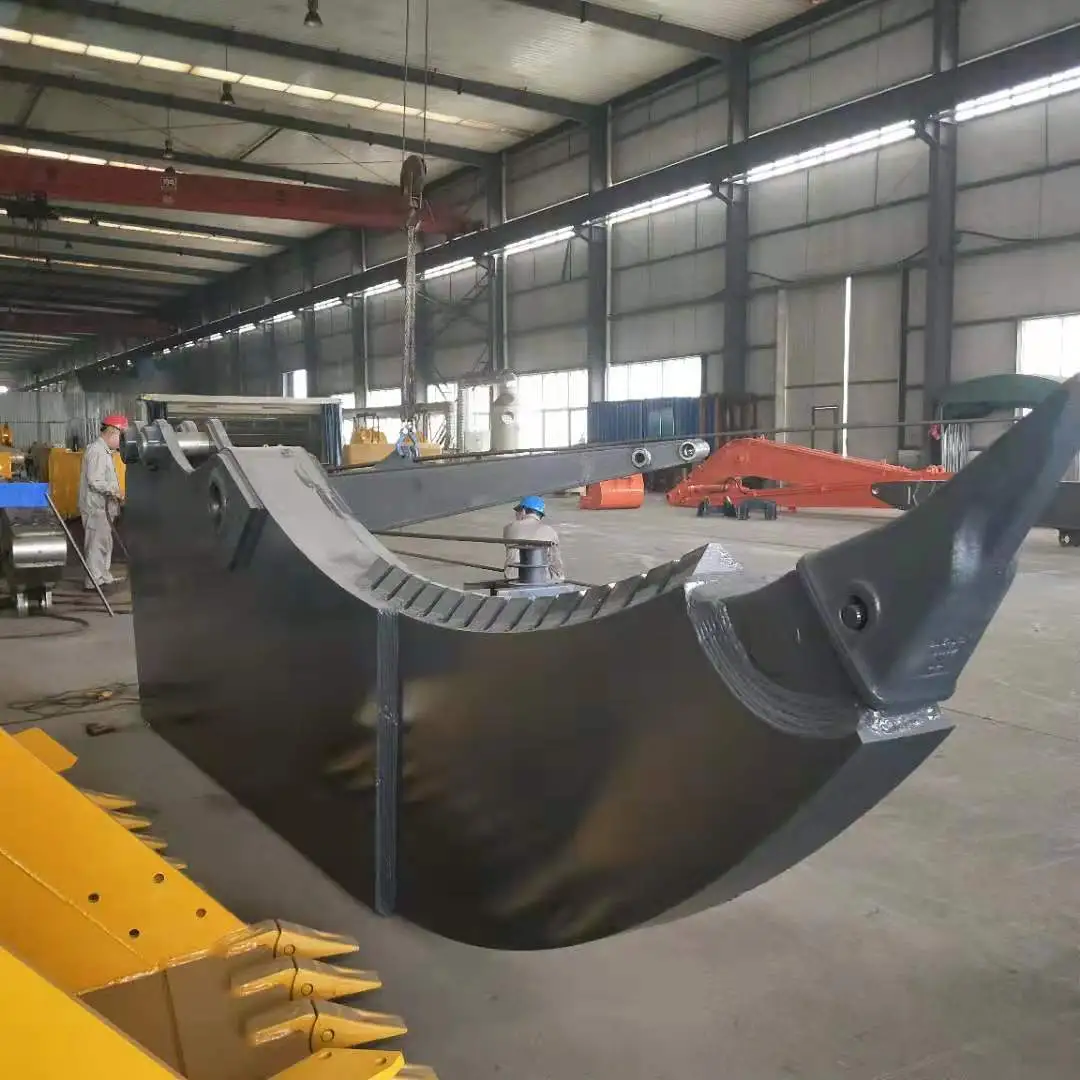
Preventative Maintenance Programs
Mining environments accelerate component wear through continuous operation in abrasive conditions. Effective excavator rock arm performance depends on implementing comprehensive preventative maintenance protocols specifically adapted to mineral processing applications. Daily inspection regimens should focus on hydraulic system integrity, with particular attention to connection points and seals where mineral dust ingress can quickly accelerate system deterioration.
Lubrication schedules for mining applications typically require shorter intervals than construction-grade equipment due to continuous operation and environmental contamination factors. High-temperature, pressure-resistant greases with excellent water washout resistance provide optimal protection for pivot points and bushings exposed to mining conditions. Automated lubrication systems represent a valuable investment for high-utilization operations, ensuring consistent lubricant application regardless of shift changes or personnel variations.
Component rotation strategies significantly extend overall attachment lifespan by distributing wear patterns across multiple wear parts. Implementing systematic replacement schedules based on material throughput rather than calendar time allows maintenance planning to align with actual usage patterns, optimizing parts inventory while minimizing unplanned downtime. This data-driven approach to maintenance scheduling represents industry best practice for mining operations focused on maximizing equipment availability.
Safety Protocols for Rock Breaking Operations
Mining safety regulations establish stringent requirements for equipment operation, particularly when breaking rock that may contain residual explosive materials from previous blasting operations. The excavator rock arm offers significant safety advantages by allowing operators to maintain a safe distance from potentially unstable material while effectively processing it. Establishing exclusion zones around active breaking operations represents fundamental safety protocol, with distances calculated based on material characteristics and breaking force applications.
Operator training programs should emphasize proper breaking techniques that maintain attachment stability while maximizing effectiveness. Working perpendicular to material grain or bedding planes typically requires less force while creating more predictable fracture patterns—knowledge that enhances both productivity and operator safety. Understanding how different geological formations respond to applied force allows operators to anticipate material behavior rather than reacting to unexpected movements.
Equipment condition monitoring technologies provide critical early warning of developing component issues before catastrophic failure occurs. Hydraulic pressure sensors, temperature monitoring systems, and vibration analysis tools offer valuable diagnostic information that supports condition-based maintenance decisions. Implementing these technologies as part of comprehensive safety programs significantly reduces risk exposure while enhancing overall operational reliability.
Environmental Considerations
Modern mining operations face increasingly stringent environmental compliance requirements regarding dust generation, noise emissions, and ground vibration. The hydraulic rock arm offers significant environmental advantages compared to drill-and-blast alternatives through reduced dust generation and substantially lower noise levels. These characteristics prove particularly valuable when operating near sensitive receptors or in jurisdictions with strict environmental performance standards.
Water management strategies often integrate with rock breaking operations to suppress dust generation through controlled spray systems. Properly implemented dust suppression not only improves environmental compliance but also enhances visibility and reduces wear on equipment operating in the vicinity. Incorporating these systems into standard operating procedures demonstrates environmental commitment while improving working conditions.
Material segregation capabilities represent another environmental advantage, as rock arms allow selective processing of different material types. This precision supports waste minimization strategies by reducing dilution of valuable minerals with waste rock, improving overall resource utilization while reducing material requiring disposal. The ability to precisely control breaking patterns supports progressive reclamation efforts by creating appropriate fragment sizes for rehabilitation applications without additional processing.
FAQ
①What excavator size is optimal for mining rock arm applications?
The ideal excavator size depends on specific mining conditions and material characteristics. For most hard rock mining applications, machines in the 60-65T range with 220mm cylinder capacity offer optimal versatility. Larger 80-100T excavators with 3670mm cylinders provide exceptional breaking force for the hardest materials, but with reduced maneuverability in confined spaces.
②How do maintenance requirements differ between mining and construction applications?
Mining applications typically accelerate wear rates by 30-50% compared to standard construction usage due to abrasive materials and continuous operation. Maintenance intervals should be shortened accordingly, with particular attention to hydraulic system protection, bushing lubrication, and wear component inspection. Implementing wear monitoring programs helps anticipate replacement needs before performance degradation occurs.
③What productivity improvements can mining operations expect?
When properly matched to material characteristics, excavator rock arms typically process 15-30% more volume per hour than conventional drill-and-blast methods in selective mining applications. Additional productivity gains come from eliminated ventilation delays in underground settings and reduced crusher downtime from oversize material management.
④How should operators adjust techniques for different rock types?
Operator technique should adapt to geological characteristics. For brittle materials like many sedimentary rocks, lighter impacts at higher frequency often prove most effective. Dense igneous formations typically respond better to maximum force application at strategic points where natural weaknesses exist. Trained operators learn to "read" material response and adjust accordingly.
⑤What safety features should mining operations look for?
Priority safety features include pressure relief systems to prevent hydraulic overload, robust guarding to contain potential hydraulic leaks, and visibility enhancements that maintain clear operator sightlines. The most advanced systems incorporate pressure sensors that detect abnormal resistance patterns that might indicate hazardous material conditions.
Contact Tiannuo
The hydraulic rock arm represents an essential productivity tool for modern mining operations confronting challenging material extraction requirements. With specialized construction, optimized hydraulic systems, and mining-specific geometries, these attachments transform standard excavators into highly effective rock processing machines capable of maintaining productivity where conventional equipment would fail.
Tiannuo Machinery's commitment to engineering excellence ensures their mining-grade rock arm products deliver exceptional performance while maintaining the durability demanded by professional mining operators. Their comprehensive range accommodates various excavator sizes from 40 to 100 tons, with each model optimized for specific carrier equipment and mining applications.
For mining companies serious about maximizing extraction efficiency while controlling operational costs, the investment in quality hydraulic attachments pays significant dividends through improved productivity, reduced processing bottlenecks, and enhanced operational flexibility. To learn more about selecting the ideal rock arm configuration for your specific mining application requirements, contact Tiannuo's technical specialists at arm@stnd-machinery.com.
References
- International Journal of Mining Science and Technology: "Comparative Analysis of Rock Breaking Technologies in Hard Rock Mining Applications" (2023)
- Mining Engineering Professional Association Technical Publication: "Optimizing Excavator Attachment Selection for Variable Geological Conditions in Open Pit Operations" (2024)
- Journal of Mining Engineering: "Safety and Productivity Improvements Through Mechanical Rock Breaking in Underground Development" (2023)
- International Mining Equipment Technical Review: "Maintenance Optimization Strategies for Hydraulic Attachments in Continuous Mining Operations" (2024)
- Society of Mining Engineers Conference Proceedings: "Environmental Performance Comparison of Mechanical vs. Explosive Rock Fragmentation Methods in Modern Mining" (2023)
About Author: Arm
Arm is a leading expert in the field of specialized construction and railway maintenance equipment, working at Tiannuo Company.

